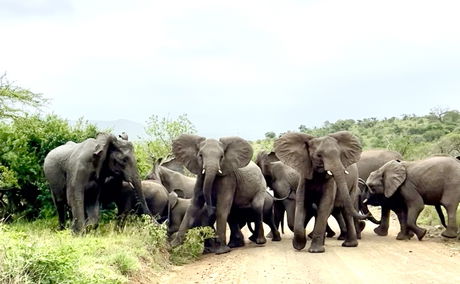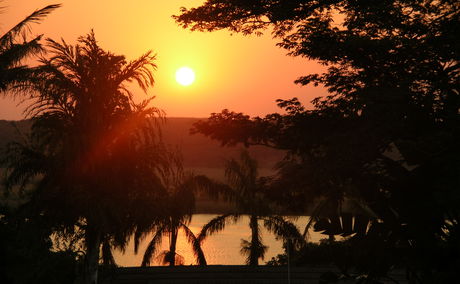There are places in the world where nature seems to follow ordinary patterns, and others where it breaks them entirely. St Lucia, a small, coastal town wrapped in the embrace of the iSimangaliso Wetland Park belongs unmistakably to the latter. This is a landscape where ecosystems blend in improbable ways, where wildlife moves confidently between human spaces, and where the natural world still feels vast, unfiltered and astonishing. It is little wonder...
Monkey Business abound in St Lucia

St. Lucia, on the northeastern coast of South Africa, is a paradise known for its breathtaking landscapes, diverse wildlife, and, of course, the cheeky vervet monkeys that call this region home. These fascinating primates provide endless entertainment for both locals and visitors alike, often leaving behind amusing and unforgettable encounters.
A Playful and Mischievous Bunch
Vervet monkeys (Chlorocebus pygerythrus) are highly intelligent and social creatures, frequently seen darting through the treetops or foraging near lodges, picnic areas, and even in backyards. Their boundless curiosity and playful antics make them a delightful spectacle—though sometimes a little too curious for their own good! Tourists often find themselves outwitted by these nimble tricksters, who have been known to snatch snacks right from picnic tables or sneak into open windows in search of a tasty treat.
A Unique Monkey “Language”
One of the most fascinating aspects of vervet monkeys is their complex system of vocalizations. Unlike many other primates, they have specific alarm calls for different predators. For instance, if a leopard is nearby, they issue a distinct warning cry that prompts the group to scramble up trees. If an eagle is spotted, they use a separate call, prompting the monkeys to seek shelter under thick vegetation. This sophisticated communication system has intrigued scientists for years and highlights their remarkable intelligence.
Local Legends and Fun Facts
St. Lucia’s vervet monkeys have become legendary for their interactions with humans. Some locals share stories of these mischievous primates sneaking into kitchens to steal fruit, while others recall their playful chases across rooftops. A particularly amusing fact is that vervet monkeys have a fondness for alcoholic beverages—they’ve been caught sipping on unattended cocktails at outdoor restaurants, much to the surprise (and sometimes frustration) of unsuspecting diners! At Lidiko Lodge, guests have even witnessed these clever monkeys making daring raids on the breakfast buffet, snatching pastries and fruit before making a quick escape into the trees.
Respecting the Wild Residents
Despite their charming and often comical behaviour, it’s important to remember that vervet monkeys are wild animals. Feeding them, while tempting, can lead to over-reliance on human food and increase conflicts between monkeys and people. Visitors to St. Lucia are encouraged to enjoy their presence from a respectful distance and secure food items to prevent any “monkey business.”
Whether they’re leaping between branches, playfully wrestling with each other, or cleverly outwitting humans, vervet monkeys bring a touch of humour and intrigue to the natural beauty of St. Lucia, South Africa. Their intelligence, agility, and mischievous nature make them one of the most captivating residents of this wildlife-rich region. So, the next time you visit St. Lucia, keep an eye on your belongings—you never know when a clever little vervet might be plotting its next playful heist!
Further Reading
There are few moments in life that remind us of nature’s quiet wisdom and unspoken harmony, moments that stop us in our tracks and leave us humbled. One such moment unfolded recently on the iMfolozi side of the Hluhluwe–iMfolozi Game Reserve, when a herd of around twenty five female elephants and their young crossed the dusty road before us. Engines idled. Conversations hushed. And in that stillness, we watched one of nature’s...
There’s something almost otherworldly about arriving in St Lucia. The coastal air carries a mix of salt and forest scent, the streets are shaded by dense tree canopies, and now and then, a hippo might amble lazily down the main road at night as if to remind everyone that this is still their turf. It’s a village where the wild and the relaxed coexist and where international travellers are increasingly finding the...





Share This Post